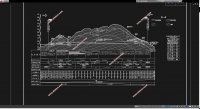龙怀高速石子椅隧道设计(含CAD图)(任务书,开题报告,外文翻译,计算说明书19000字,CAD图纸9张)
摘要
随着社会的发展,人们越来越向往能简单的出行,在面对大山时,除了盘山公路,公路隧道应运而生。它集环保科技于一身,具备高速快捷等优势,更能适应当今人们对出行的需求。
隧道为分离式单向行驶隧道,左线长659m,右线长620m,其中左、右进洞口长18m,围岩级别为V级;洞身围岩级别为IV级长440m~570m;左、右出洞口长18m,围岩级别为V级。
本隧道左线进口段由于进洞地形较陡,设置5m明洞,采用端墙式洞门;右线进口段虽轴线与地形等高线基本正交,但从景观协调角度考虑,设计采用5m端墙式洞门,与左线进口洞门型式统一。左线出口段轴线与地形等高线基本正交,与右线出口段洞门纵向错开较长,设计为削竹式洞门。隧道右线出口轴线与地形等高线斜交,偏压严重,设计采用5m端墙式洞门,同时设置6m暗洞反压回填段
关键词:隧道;衬砌;围岩;排水;通风;照明
Abstract
As the development of the society, more and more people are yearning for a simple trip can, in the face of the mountain, in addition to winding roads, highway tunnels emerged. It combines environmental technology in one, with fast speed and other advantages, can adapt to today's demand for travel.
The tunnel is a separate one-way traffic tunnel, the left line length 629m, The right line length 620m,into the hole of left and right line, length 18m, Rock Classification for Class V;Tunnel Rock Classification for Class length 440to570m; out of the hole of left and right line,length 18m, Rock Classification for Class V.
Left lane access section of the tunnel due to the steep terrain into the hole, setting 5m Myeong-dong, the use of side wall Portal; although the right lane access section axis substantially orthogonal to the topographic contour lines, but from the viewpoint of landscape coordination, design uses 5m Portal end wall, with the left line import unified portal type. The left lane of the outlet section axis substantially orthogonal to the topographic contour lines, and the right line portal Longitudinal offset outlet section is longer, is designed to cut bamboo tunnel portal. Right Line Tunnel exit axis and topographic contours bias, bias serious, designed with 5m side wall Portal, dark hole and set 6m backpressure backfill segment
Keywords: tunnel; composite lining; drainage; Portal; ventilation; lighting
2.1 隧道主要技术标准
1)公路等级:双向六车道高速公路。
2)隧道设计行车速度:100km/h。
3)隧道建筑限界净宽:0.75+0.25+0.5+3×3.75+1.0+1.0=14.75m,
4)隧道建筑限界净高:5.0m。
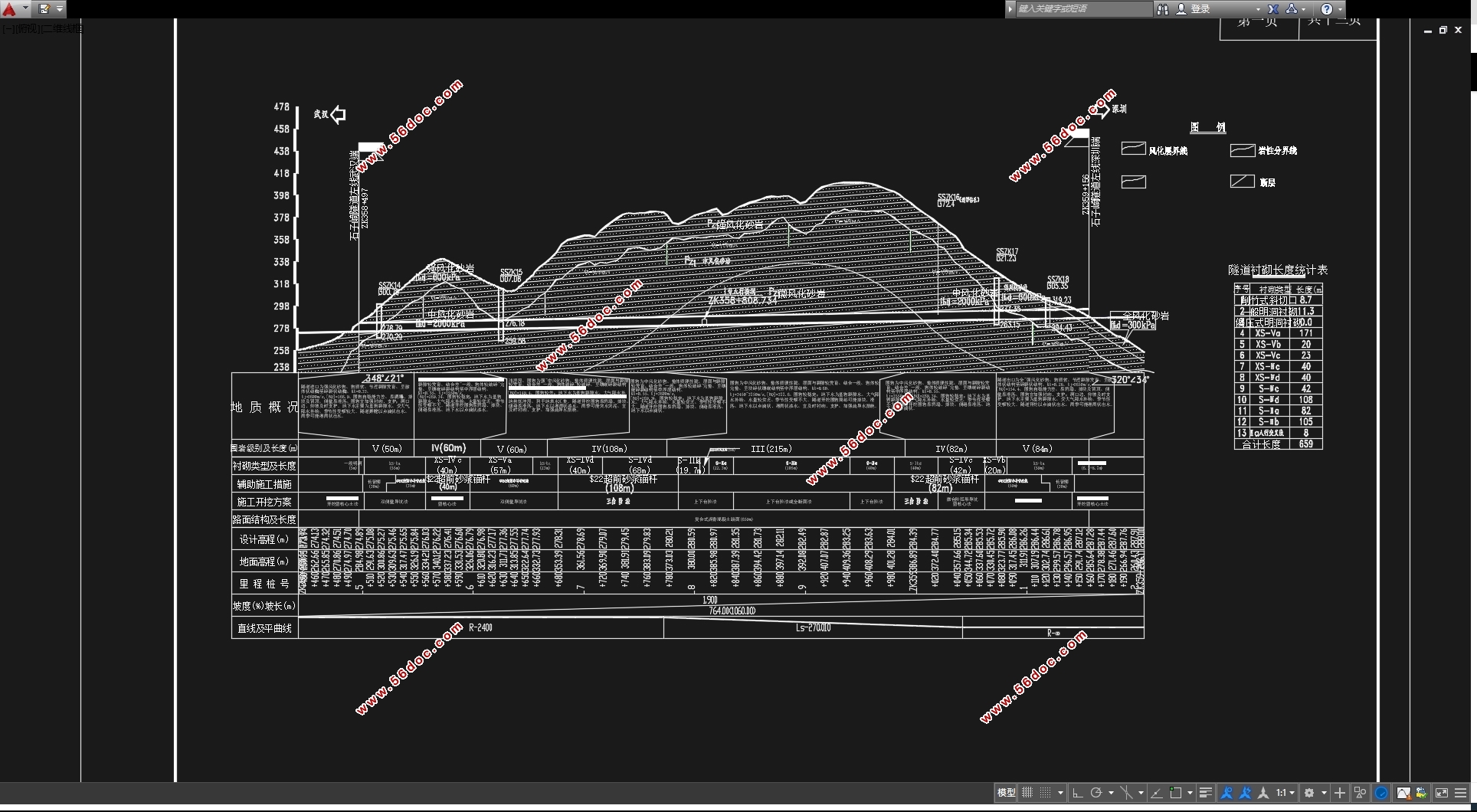
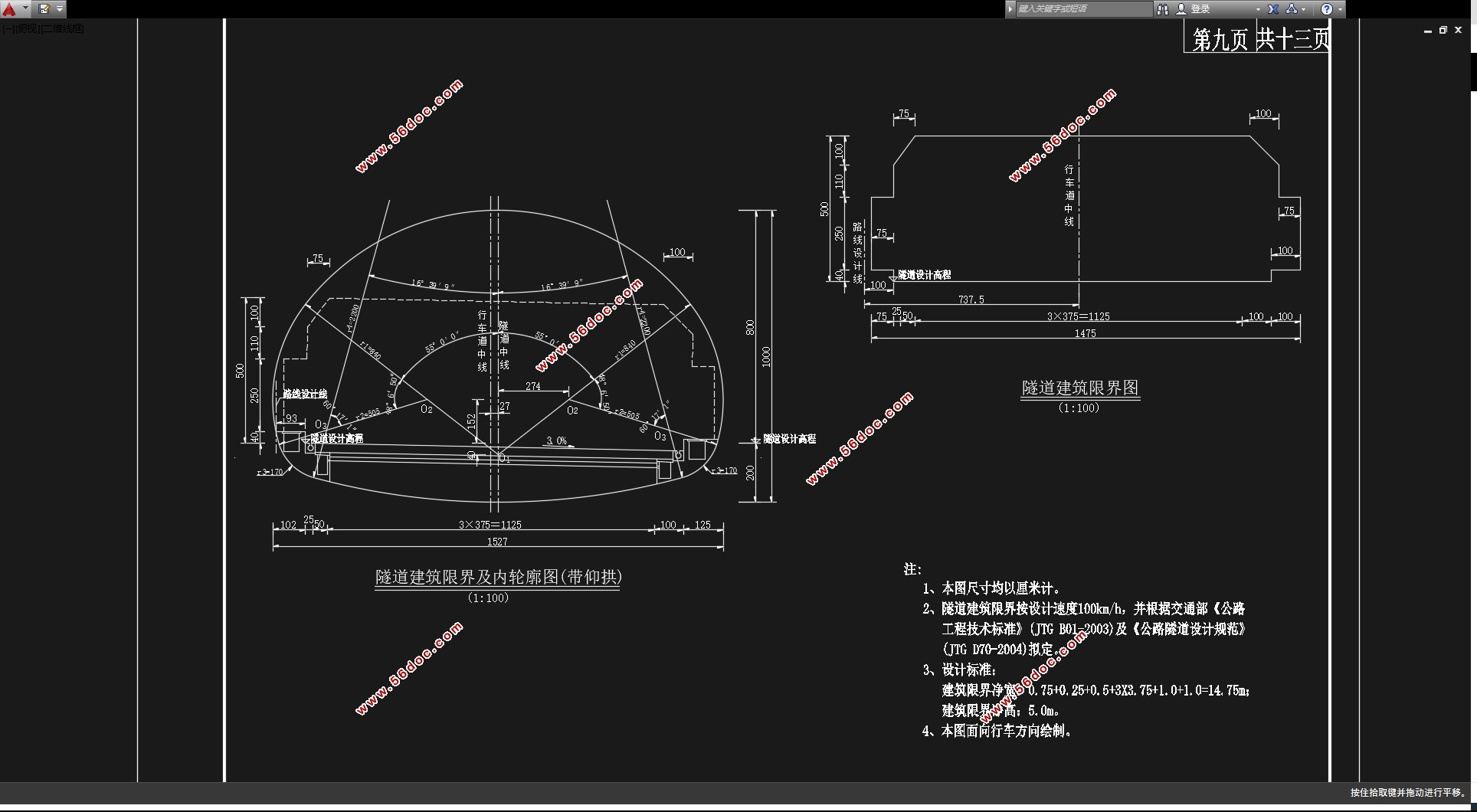
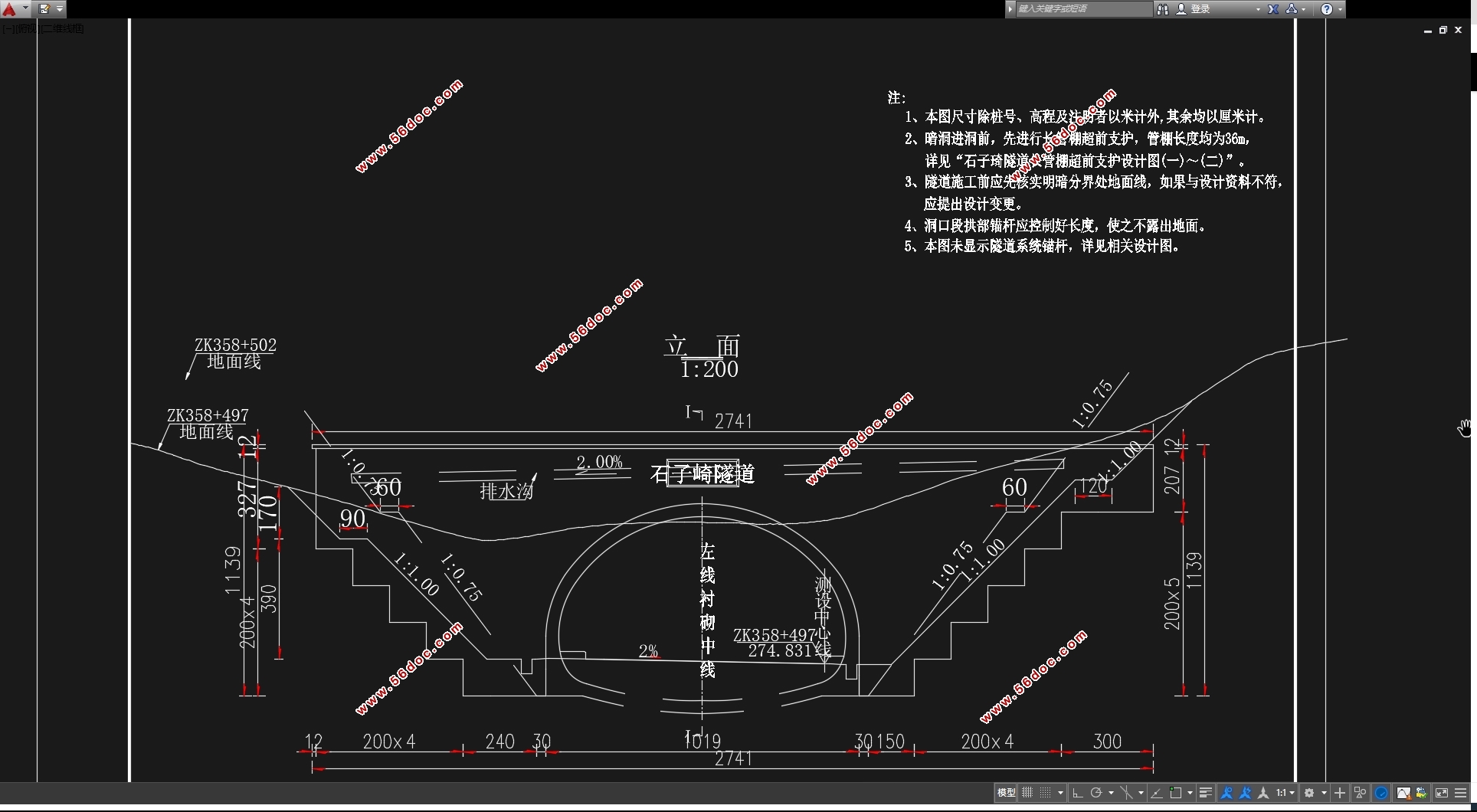
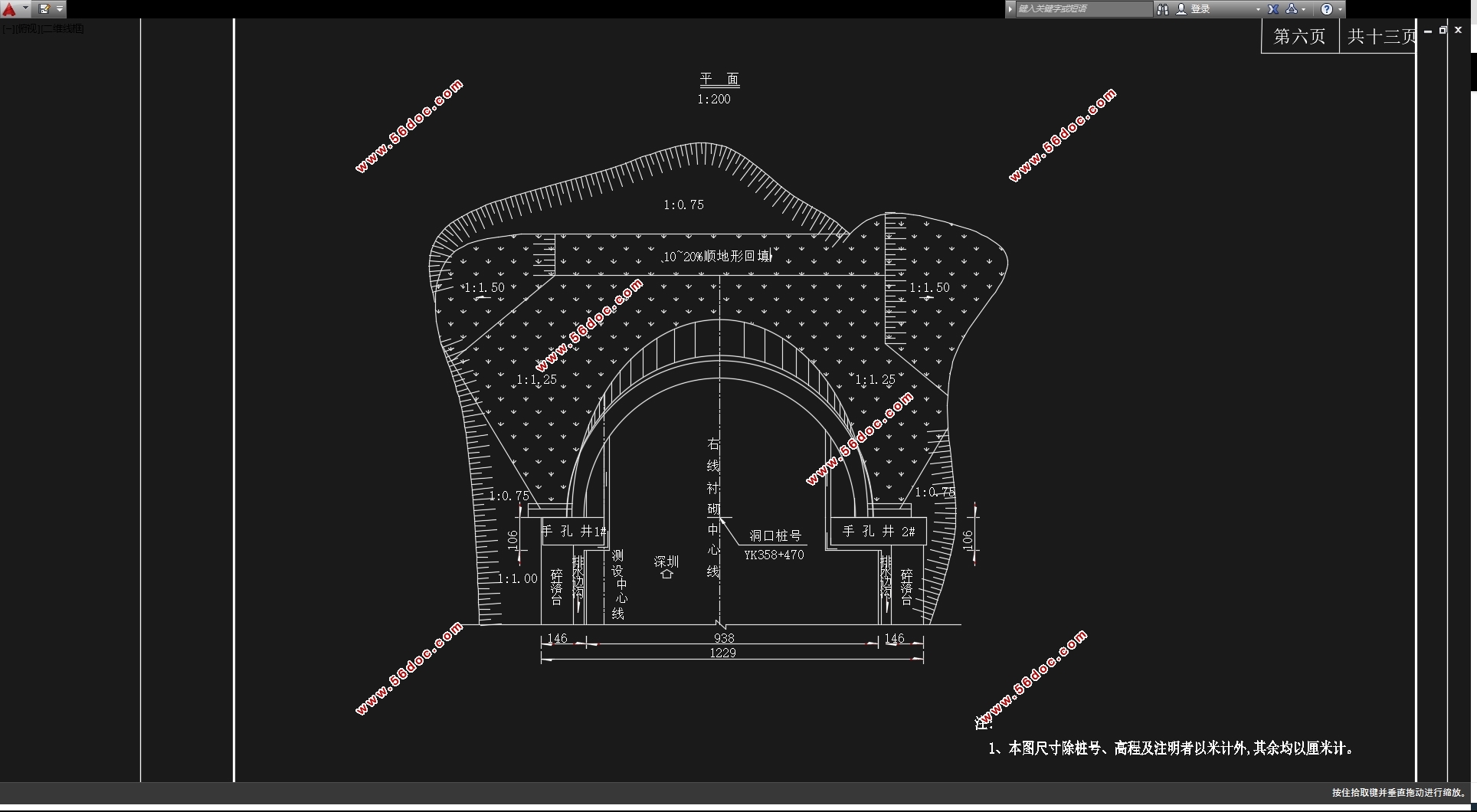
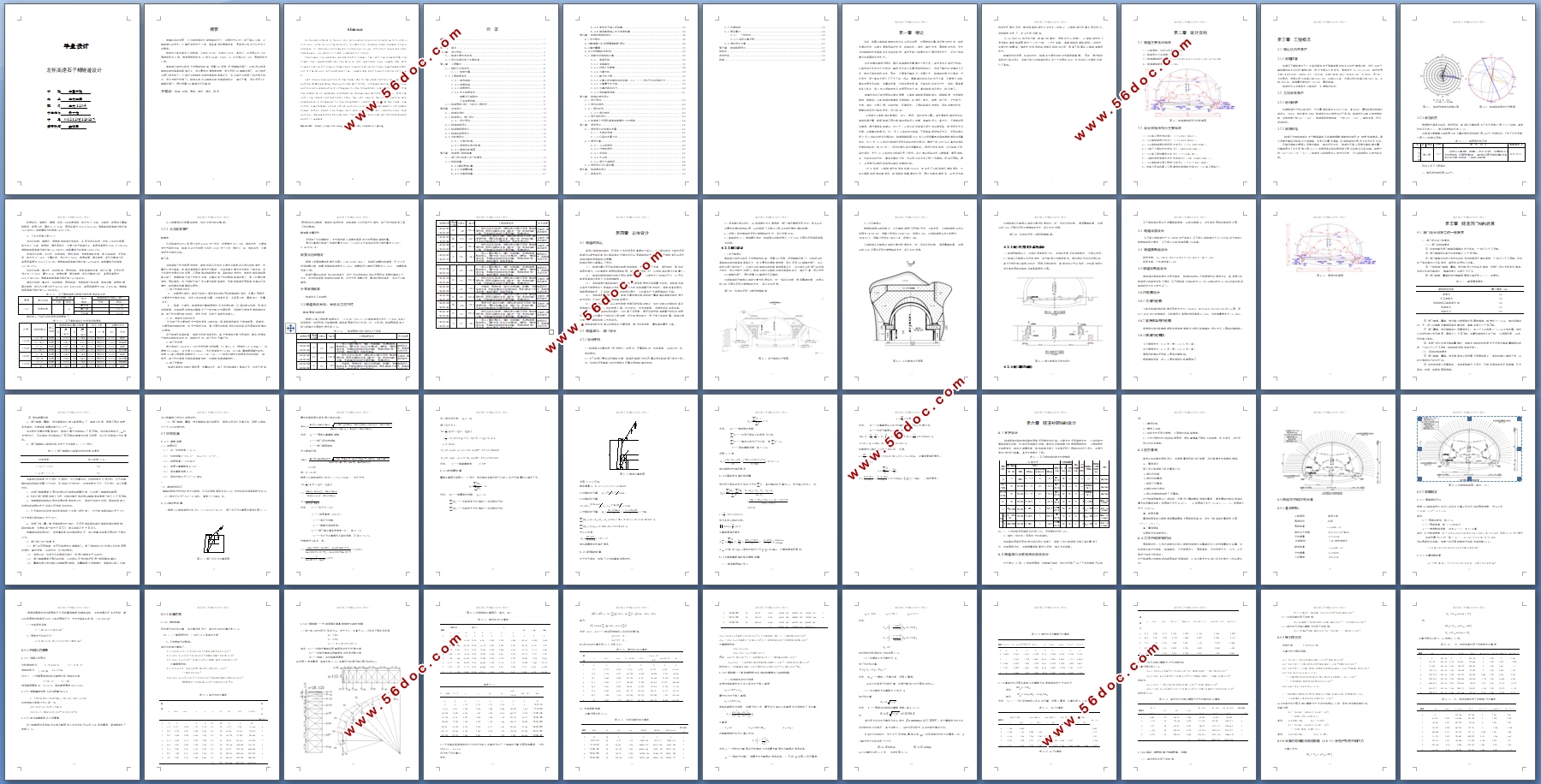
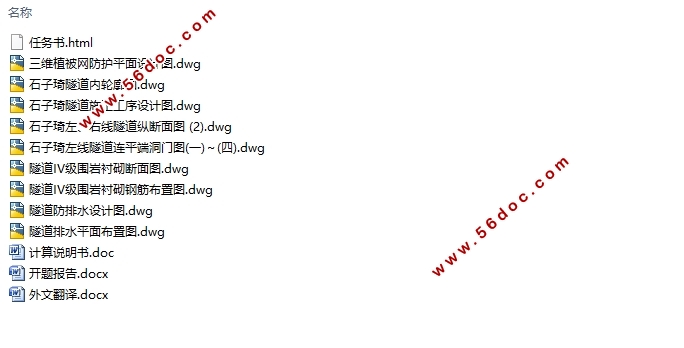
目 录
摘要 I
Abstract II
第一章 绪论 1
第二章 设计资料 3
2.1 隧道主要技术标准 3
2.2 设计依据与执行主要标准 3
第三章 工程概况 4
3.1 隧址区自然条件 4
3.1.1地理位置 4
3.2 工程地质条件 4
3.2.1地形地貌 4
3.2.2地质构造 4
3.2.3地层岩性 5
3.2.4 水文地质条件 7
地震及区域稳定 8
不良地质现象 8
3.3隧道围岩分级、分段及工程特性 8
第四章 总体设计 10
4.1 隧道的选址 10
4.2 隧道洞口、洞门设计 10
4.2.1设计原则 10
4.3 隧道线型设计 14
4.4 隧道横断面设计 14
4.5隧道纵断面设计 14
4.6内轮廓设计 14
4.6.1主洞内轮廓 14
4.6.2紧急停车带内轮廓 14
4.6.3横洞内轮廓图 14
第五章 隧道洞门结构验算
5.1 洞门设计和施工的一般要求 16
5.2结构验算 18
5.2.2稳定性验算 18
5.2.3抗倾覆验算 20
5.2.3抗滑动验算 21
5.2.4基底合力偏心矩验算 22
5.2.5墙身截面偏心矩及强度验算 22
第六章 隧道衬砌结构设计 24
6.1支护设计 24
6.2隧道洞口及软弱围岩地段设计 24
6.3监控量测 25
6.4二次衬砌施作时间 25
6.5曲墙式衬砌结构计算 26
6.5.1基本资料: 26
6.5.2荷载确定 27
6.5.3衬砌几何要素 28
6.5.4计算位移 29
6.5.5解力法方程 37
6.5.6计算主动荷载和被动荷载(σh =1)分别产生的衬砌内力 37
6.5.7计算最大抗力值 39
6.5.8计算衬砌总内力 40
6.5.9检验截面强度 41
第七章 隧道防排水设计
7.1设计原则 43
7.2洞内防排水 43
7.2.1洞内防水 43
7.2.2洞内排水 43
7.3洞外排水设计 43
7.4 隧道施工大面积或局部渗漏水应对措施 44
第八章 照明设计 45
8.1照明设计的选择与布置 45
8.1.1光源的选择 45
8.1.2灯具的布置方式 46
8.2照明计算 46
8.2.1入口段照明 46
8.2.2过渡段照明 47
8.2.3中间段 47
8.2.4出口段 47
8.2.5洞外引道照明 48
8.3照明设计及灯具布置 48
第九章 隧道通风设计 50
9.1基本条件 50
9.2 车辆组成 50
9.3 需风量计 50
9.3.1 一般规定 50
9.3.2 实际计算过程 50
9.4 通风设计计算 53
第十章 隧道路面设计 57
结束语 58
参考资料 59
致谢 60
|
